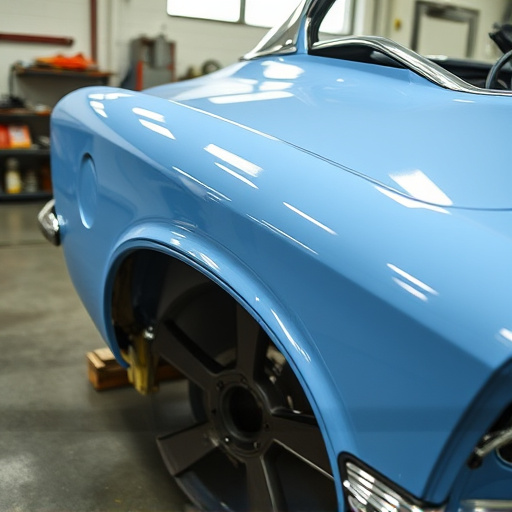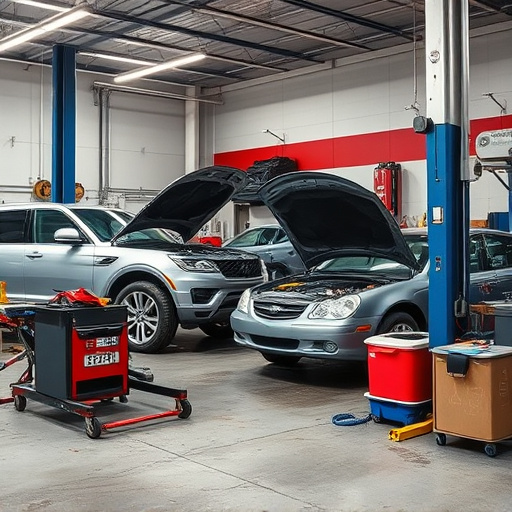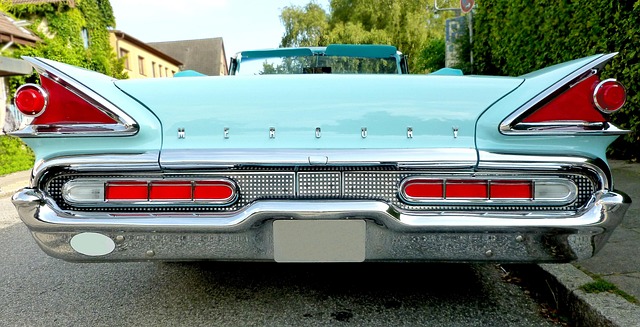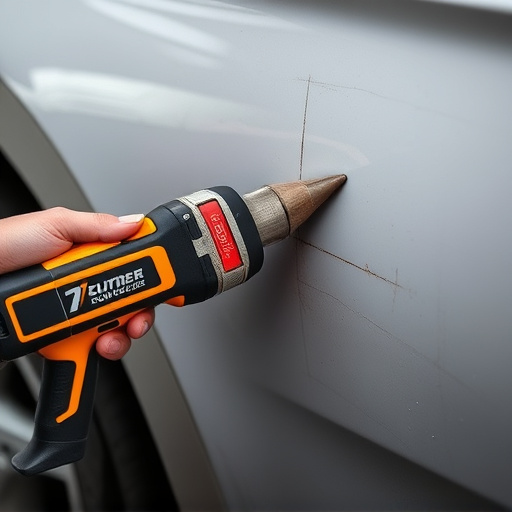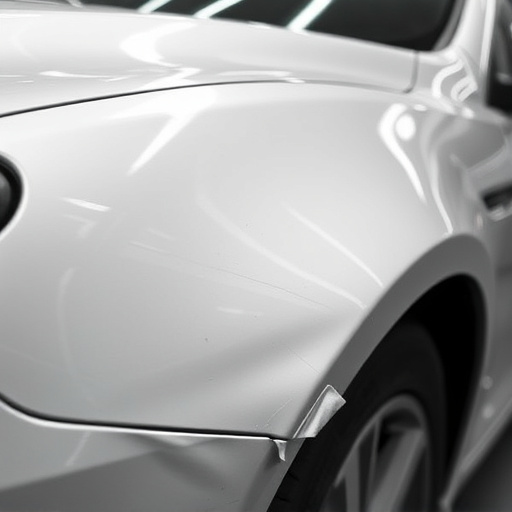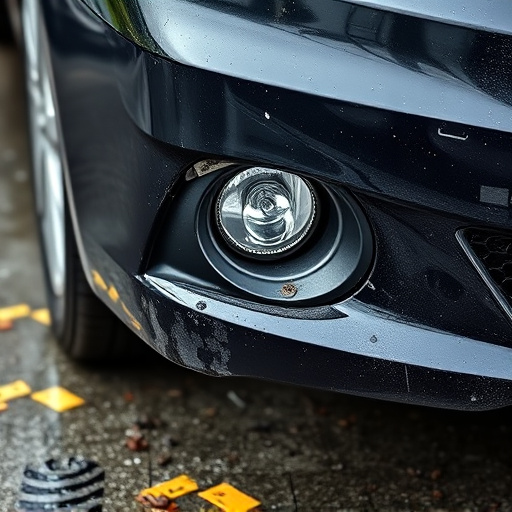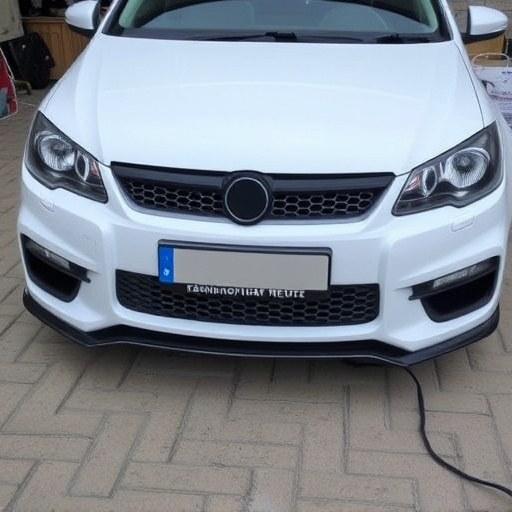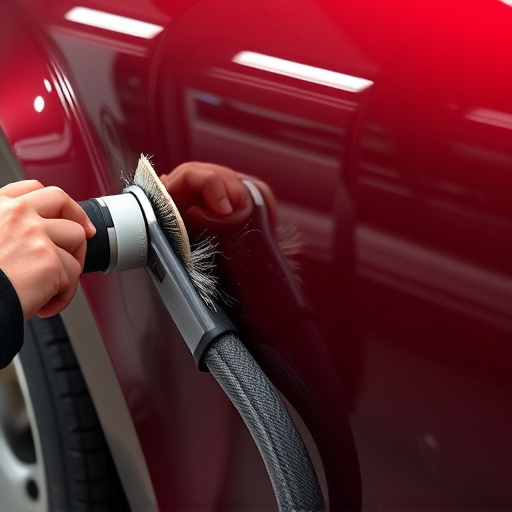Repair Quality Verification (RQV) is essential for Electric Vehicles (EVs), ensuring all components, from batteries to motor control units, function safely and reliably. This rigorous process, similar to a crucible for complex technology, aligns repairs with industry standards, maintaining EV performance and longevity. For specialized auto body work and frame repair, RQV offers peace of mind, confirming vehicles are in optimal condition. As EV technology advances with features like ADAS and autonomy, precise and safe repairs become paramount. Best practices involve skilled technicians conducting thorough inspections with advanced tools, using OEM parts, and adhering to strict safety protocols to ensure top-tier EV repairs.
In the rapidly evolving electric vehicle (EV) landscape, ensuring top-quality repairs is paramount to gaining and retaining consumer trust. This article delves into the repair quality verification process, exploring its significance as a cornerstone of reliable EV maintenance. We analyze the unique challenges posed by EV repairs and discuss why rigorous quality verification is more crucial than ever before. Furthermore, it provides best practices to ensure accurate and consistent EV repair outcomes.
- Understanding Repair Quality Verification: The Cornerstone of EV Repairs
- Challenges in EV Repair: Why Quality Verification is More Crucial Than Ever
- Best Practices for Effective Repair Quality Verification: Ensuring Top-Tier EV Repairs
Understanding Repair Quality Verification: The Cornerstone of EV Repairs
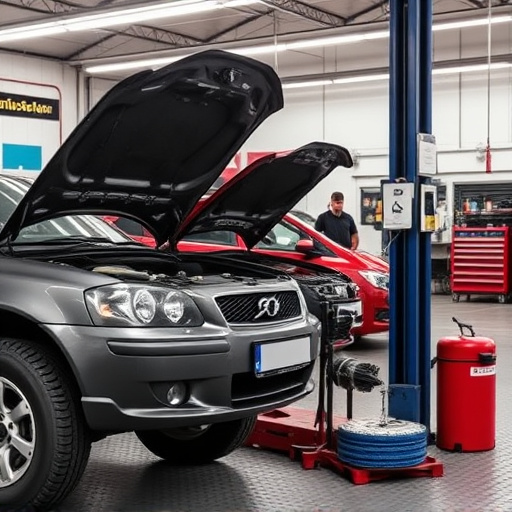
Repair Quality Verification is a meticulous process that serves as the cornerstone of Electric Vehicle (EV) repairs. It’s not merely about checking if components are installed correctly; it involves comprehensive testing and evaluation to ensure EV systems function seamlessly and safely. This rigorous verification process is pivotal for maintaining the performance, reliability, and longevity of EVs, which are complex pieces of technology.
In the realm of vehicle repair services, especially for specialized auto body work and auto frame repair, meticulous attention to detail is paramount. Repair Quality Verification ensures that every repair, from battery systems to motor control units, aligns with stringent industry standards. This not only safeguards the integrity of the EV but also offers peace of mind to owners, knowing their vehicles are in optimal condition.
Challenges in EV Repair: Why Quality Verification is More Crucial Than Ever
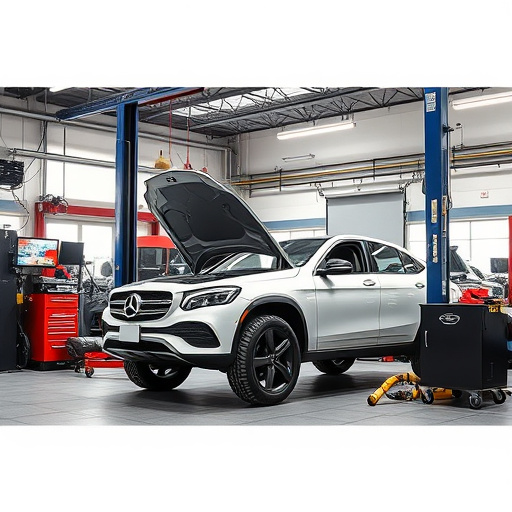
In the rapidly evolving electric vehicle (EV) landscape, repairs present unique challenges that demand meticulous attention. Unlike conventional vehicles, EVs have intricate electrical systems and specialized components, making repair processes more complex. As EV technology advances, so does the need for precise and safe repairs to ensure optimal performance and safety standards. This is where repair quality verification plays an indispensable role.
With the increasing prevalence of advanced driver-assistance systems (ADAS) and autonomous features in EVs, even minor repairs can have significant implications. Traditional auto dent repair or auto glass replacement now involves calibrating sensors, reprogramming software, and ensuring seamless integration with the vehicle’s network. A collision center performing EV repairs must verify the quality of each step to prevent system malfunctions or safety hazards. This is crucial in a market where consumer expectations for superior craftsmanship and performance are ever-rising.
Best Practices for Effective Repair Quality Verification: Ensuring Top-Tier EV Repairs
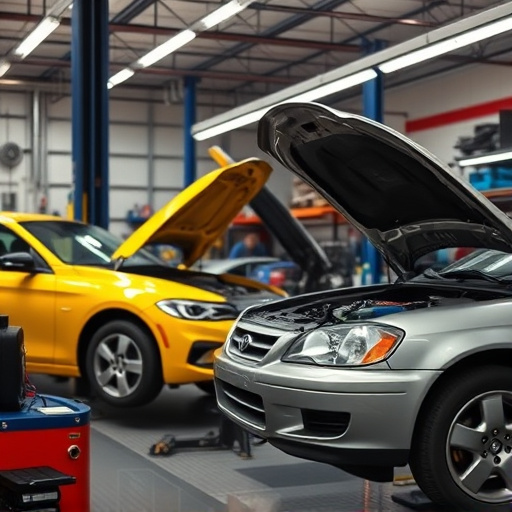
Best Practices for Effective Repair Quality Verification ensure top-tier EV repairs. The process begins with a thorough inspection, where skilled technicians meticulously assess every component, from battery systems to motor functionality. Advanced diagnostic tools play a crucial role in this stage, allowing for precise identification of issues and ensuring no stone is left unturned.
Standardized quality control measures, including the use of original equipment manufacturer (OEM) parts and strict adherence to safety protocols, further fortify the repair process. In the case of fender repair or auto collision repair, for example, aligning with OEM specifications guarantees structural integrity and optimal performance. Similarly, meticulous auto frame repair techniques, employing state-of-the-art equipment, preserve the vehicle’s overall strength and aesthetics.
In light of the growing electric vehicle (EV) market, ensuring high-quality repairs is more critical than ever. As EV technology advances, so do the complexities of repairs, making effective repair quality verification essential for maintaining safety and performance. By adopting best practices outlined in this article, workshops can elevate their standards, foster customer trust, and contribute to the overall reliability of the EV ecosystem. Investing in robust repair quality verification processes is a game-changer for the industry, ensuring EVs hit the road with confidence.
